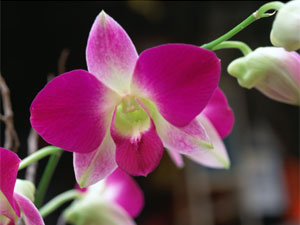Just In
- 2 hrs ago

- 3 hrs ago

- 7 hrs ago

- 11 hrs ago

Don't Miss
- Movies
 Salman Khan Case: Actor Arrives In 'X' Cr Car At Airport With Tight Security Days After House Firing Incident
Salman Khan Case: Actor Arrives In 'X' Cr Car At Airport With Tight Security Days After House Firing Incident - Finance
 Closing Bell: Market Stages Smart Recovery, Sensex & Nifty Snap 4-Day Losing Streak Led By HDFC Bank
Closing Bell: Market Stages Smart Recovery, Sensex & Nifty Snap 4-Day Losing Streak Led By HDFC Bank - News
 Who Is Isha Arora? The Viral UP Poll Officer Taking Social Media By Storm
Who Is Isha Arora? The Viral UP Poll Officer Taking Social Media By Storm - Sports
 DC vs SRH, IPL 2024: Will David Warner play against Sunrisers Hyderabad?
DC vs SRH, IPL 2024: Will David Warner play against Sunrisers Hyderabad? - Automobiles
 Ford Territory SUV Name Trademarked – Likely To Be Positioned Below The Everest SUV
Ford Territory SUV Name Trademarked – Likely To Be Positioned Below The Everest SUV - Technology
 OnePlus Ace 3 Pro Leak Hints at New Design; Expected Launch, Specifications We Know So Far
OnePlus Ace 3 Pro Leak Hints at New Design; Expected Launch, Specifications We Know So Far - Travel
 Journey From Delhi To Ooty: Top Transport Options And Attractions
Journey From Delhi To Ooty: Top Transport Options And Attractions - Education
 IIIT-Bangalore Introduces PG Diploma In Digital Product Design And Management
IIIT-Bangalore Introduces PG Diploma In Digital Product Design And Management
Apartment Garden: Top 3 'No Soil Plants'

Some plants do grow without soil and if you wonder how then it is because they are getting all the necessary nutrients that the soil provides else where. Know more about these 'too flexible' apartment garden plants.
Top 3 No Soil Plants For Apartment Gardening
Without soil, they thrive in a bottle that supports, provides ideal temperature and oxygen. These plants have the power to absorb oxygen from water. Here is the top 3 best list.
1. Orchids - The beautiful lilac flowers can be your property if you know the best way to take care of them. Orchids do not demand soil, they are plants that require support but loose substrata. Orchids can be grown like creepers, epiphytes (grown on trees) or lithophytes (on rocks). A long nozzle bottle with half filled water that needs to be changed often will be enough for the orchid apartment garden. A bed of sand, glazed stones can also be the substrata of the bottle.
2. Money Plant – These lucky home plants can also be planted in glass bottles or vases. The plant is ever green so sunlight is important to maintain their colour. Simply keeping a cutting of the plant and pruning the yellow brown leaves is enough with respect to the plant care. A few drops of manure can be directly added to the water and the stem can be tied or given a support of the wall.
3. Ivy - English ivy (Hedera helix) is the most versatile apartment plant as it is easiest to grow. They make your small space apartment garden look green and fresh. They make the balcony area look like a virtual lawn. The rapid growing plant is first wrapped in damp cloth. After the roots develop, they can be planted in a pot or a vessel containing damp sand. When they reach a certain height (about 50 feet), either they can be climbers or transferred to a bigger pot.
-
 gardeningTips On How To Keep Apartment Plants Alive
gardeningTips On How To Keep Apartment Plants Alive -
 gardeningHow To Grow Basic Vegetable Garden
gardeningHow To Grow Basic Vegetable Garden -
 gardening8 Natural Fertilisers For Rose Soil
gardening8 Natural Fertilisers For Rose Soil -
 gardeningWeird Gardening Tips That You Never Knew
gardeningWeird Gardening Tips That You Never Knew -
 gardening10 Things To Remember While Buying Seeds
gardening10 Things To Remember While Buying Seeds -
 gardeningTips To Remove Mold From Garden Soil
gardeningTips To Remove Mold From Garden Soil -
 gardeningSimple Gardening Tips For Looking After Flowers In Winter
gardeningSimple Gardening Tips For Looking After Flowers In Winter -
 gardeningEfficient Ways To Manure A Vegetable Garden
gardeningEfficient Ways To Manure A Vegetable Garden -
 gardeningThe Best Soil Mix For Container Gardening
gardeningThe Best Soil Mix For Container Gardening -
 gardeningBest Tips To Grow Carnations
gardeningBest Tips To Grow Carnations -
 gardeningSimple Ways To Improve Soil In Your Garden
gardeningSimple Ways To Improve Soil In Your Garden -
 gardeningBest Tips To Grow Dahlias In Your Garden
gardeningBest Tips To Grow Dahlias In Your Garden


 Click it and Unblock the Notifications
Click it and Unblock the Notifications



